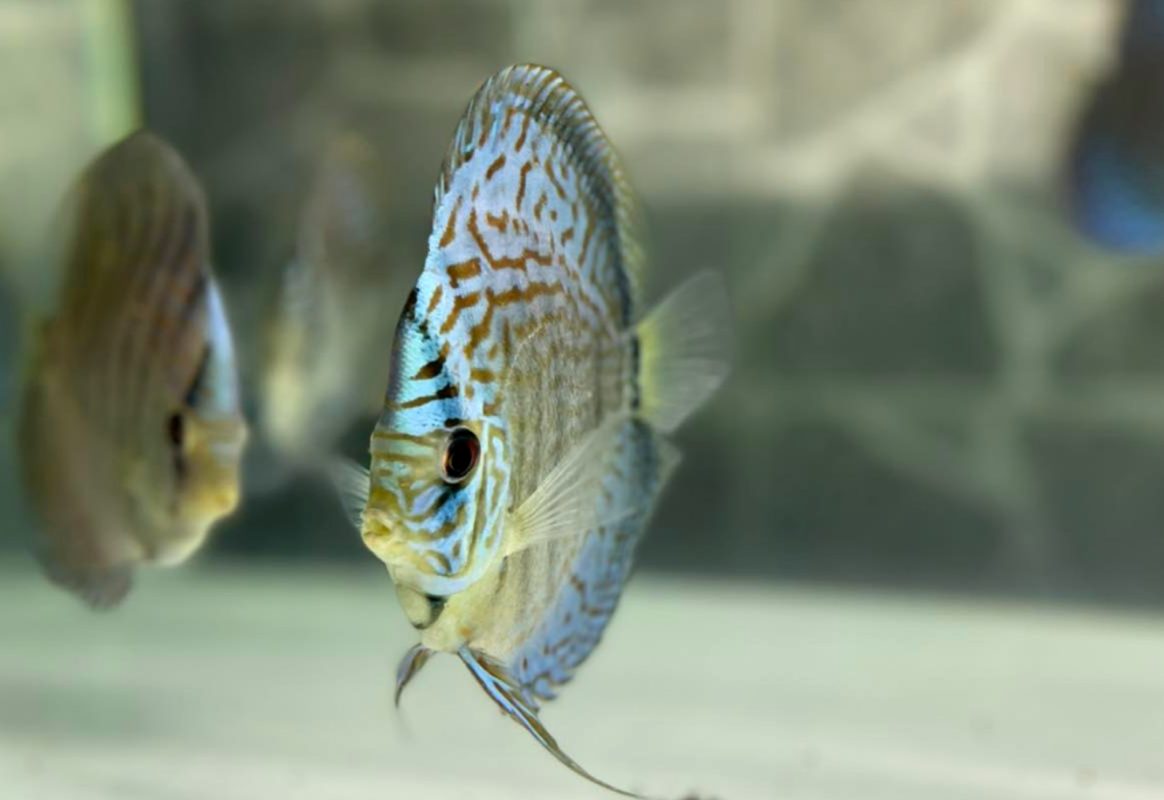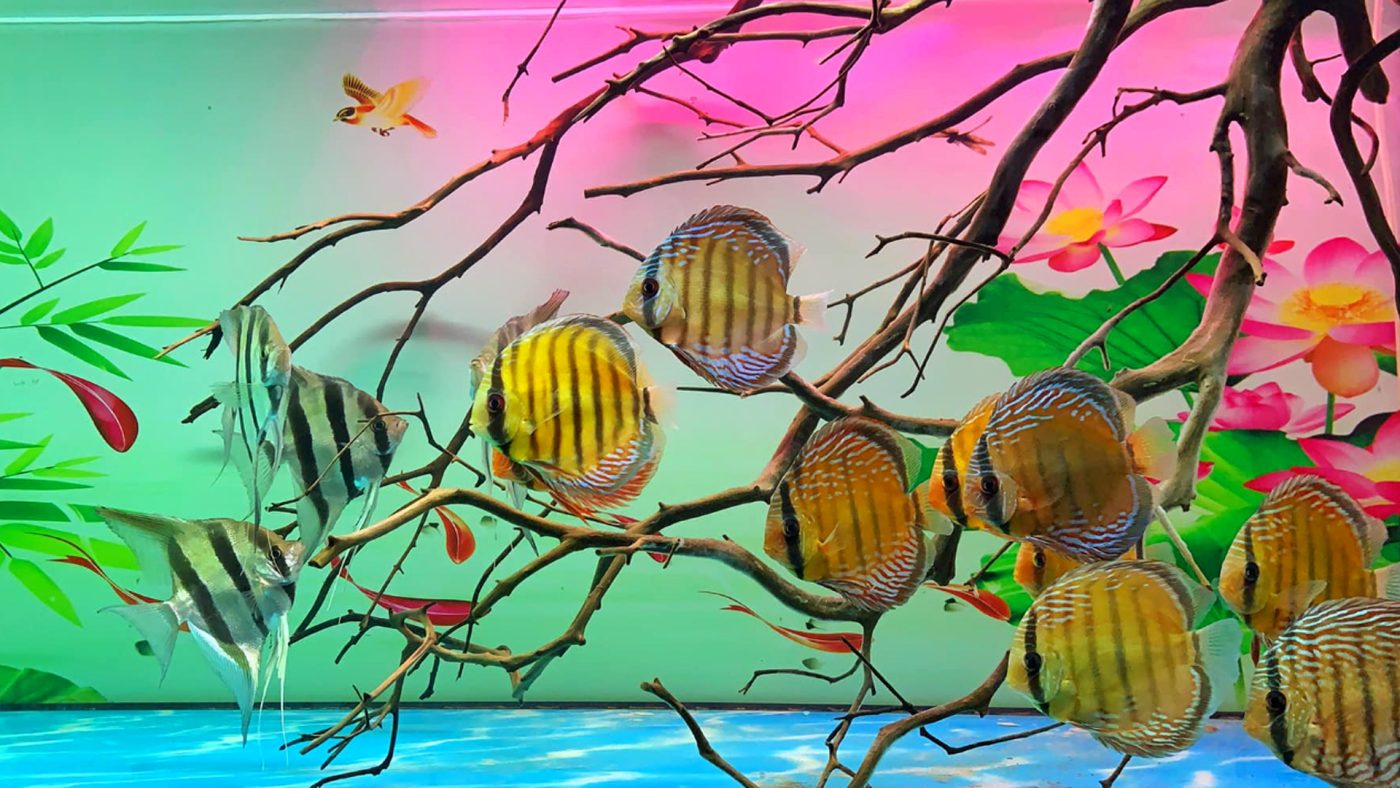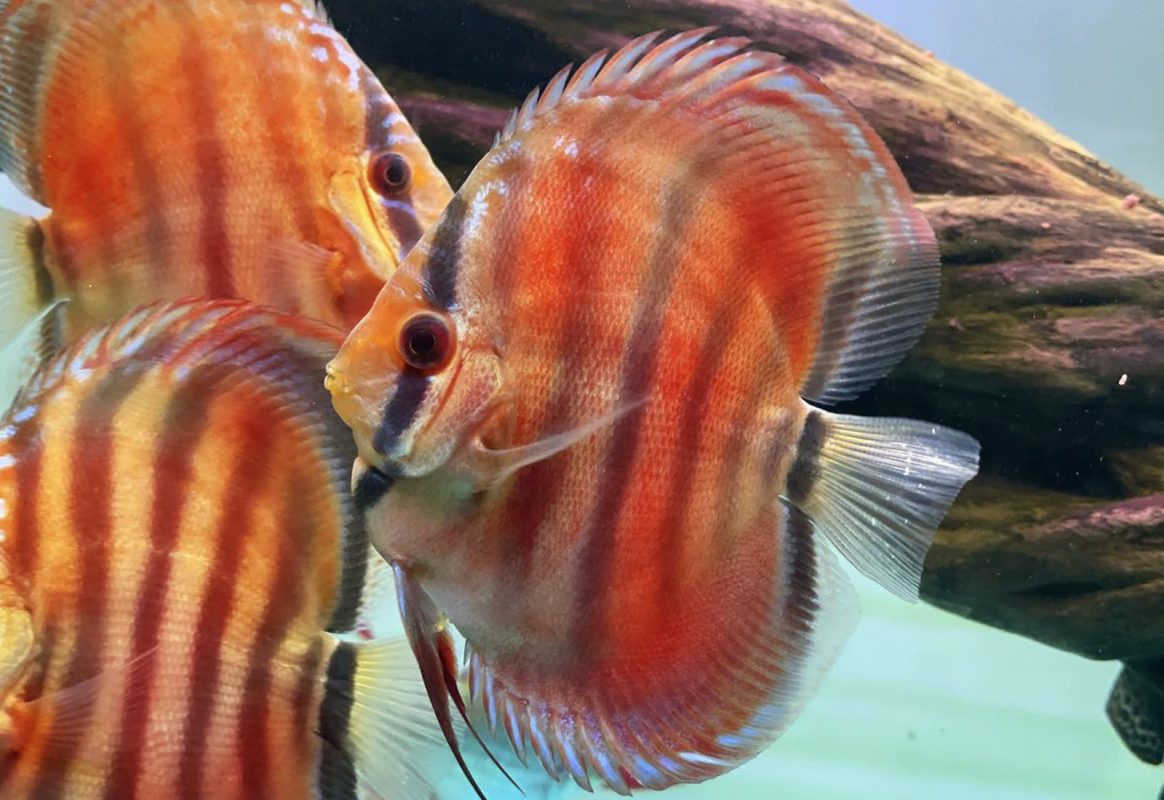Blogs
Symphysodon Discus Fish – A Comprehensive Guide to the Vibrant Amazonian Cichlid
Prepare to be enthralled by the captivating world of Symphysodon discus, a species of cichlid native to the Amazon Basin. Known for their exquisite shape, vibrant colors, and devoted parenting skills, these fish have garnered a cult following among aquarium enthusiasts. Immerse yourself in this comprehensive guide to unravel the intricate details of their biology, care, and significance in the ornamental fish trade.
Taxonomy and Physical Characteristics
Taxonomy
- Kingdom: Animalia
- Phylum: Chordata
- Class: Actinopterygii
- Order: Perciformes
- Family: Cichlidae
- Genus: Symphysodon
Physical Characteristics
- Shape: Distinctly flat and circular, with pointed lips
- Size: Typically 4-6 inches in diameter
- Coloration: Ranges from vibrant reds, oranges, and blues to subtle patterns
Habitat and Distribution

Habitat
Symphysodon discus thrives in specific blackwater habitats characterized by:
- Temperature: High temperature range of 26–32 °C (79–90 °F)
- pH: Low pH of 4.2–5.2
- Water Conditions: Clear, well-oxygenated water with high dissolved oxygen levels
Distribution
These fish are primarily found in the following regions of the Amazon Basin:
- Lower Rio Negro
- Upper Uatumã
- Nhamundá
- Trombetas
- Abacaxis
Aquarium Care
Water Requirements
- Temperature: Maintain a steady temperature of 82°F
- pH: Range of 6.5–7.5
- Hardness: 1–12 dH
- Filtration: Use peat-filtered water and establish a well-planted aquarium for optimal water quality
Feeding
Symphysodon discus requires a varied diet of:
- Live Foods: Artemia, brine shrimp, and mosquito larvae
- Frozen Foods: Mysis shrimp, bloodworms, and daphnia
- Dry Flake Food: As a supplement
Aquarium Size
- Young Discus: Minimum 40 inches long by 20 inches wide and 20 inches tall
- Adult Discus: 5-foot long aquarium or approximately 75-gallon minimum
Behavioral Characteristics
- Peaceful Nature: Coexists harmoniously with other fish, except during spawning season
- Group Behavior: Best kept in groups to allow for pair bonding and territory establishment
- Defensive Parenting: Vigorously protects young during breeding

Importance in the Ornamental Fish Trade
Cult Following
Symphysodon discus has garnered a devoted following among collectors and enthusiasts.
Multimillion-Dollar Industry
The global discus fish industry, spanning from breeding to international trade, generates significant revenue.
Shows and Competitions
Prestigious events showcase exceptional discus specimens, fostering competition and promoting the species.
Aquaculture and Breeding
Aquaculture
- Major Industry: Aquaculture of discus fish thrives in several Asian countries, particularly Thailand
- Water Parameters: Specific water conditions, including higher temperature and lower pH, enhance breeding success
Breeding Techniques
- Pair Bonding: Discus fish pair for life and engage in elaborate courtship rituals
- Egg Laying: Females deposit eggs on a flat surface, typically beneath plant leaves
- Mouthbrooding: Both parents take turns incubating eggs and caring for fry in their mouths
Species Significance
Conservation Status
- Wild Populations: Listed as “Vulnerable” by the IUCN due to habitat loss and overfishing
- Aquarium Breeding: Captive breeding programs contribute to species preservation
Research and Scientific Value
- Genetic Diversity: Symphysodon discus exhibits extensive genetic diversity, offering insights into evolutionary processes
- Behavior Studies: Research focuses on their unique parenting behaviors and social interactions
Common Diseases
Bacterial Infections
- Fin Rot: Caused by bacteria, resulting in erosion of fins
- Columnaris: A highly contagious bacterial infection that affects the gills and skin
Parasitic Infections
- Ich: A protozoan parasite that causes white spots on the body
- Flukes: Parasitic worms that adhere to the gills or skin
FAQs
1. What is the average lifespan of a discus fish?
Answer: With proper care, discus fish can live for approximately 10-15 years.
2. Can discus fish be kept with other fish?
Answer: Yes, discus fish can coexist peacefully with other non-aggressive species, such as tetras, angelfish, and certain types of catfish.
3. What is the ideal water temperature for discus fish?
Answer: The optimal water temperature for discus fish is 82°F, with fluctuations not exceeding 2-3°F.
4. How often should I feed discus fish?
Answer: Feed discus fish twice a day, providing small portions to prevent overfeeding. Fast them once a week for better digestion and water quality.
5. Can discus fish be kept in planted aquariums?
Answer: Yes, discus fish thrive in well-planted aquariums. Plants provide hiding places, reduce stress, and improve water quality.
Conclusion
Symphysodon discus stands as a testament to the captivating beauty and intricacies of the underwater world. Their vibrant colors, unique parenting techniques, and delicate nature have captivated the hearts of aquarium enthusiasts worldwide. As conservation efforts continue to protect wild populations, captive breeding programs ensure the preservation and appreciation of this magnificent species for generations to come.
Key Takeaways
- Symphysodon discus is a highly sought-after cichlid known for its distinctive shape and coloration.
- Their natural habitat is blackwater rivers in the Amazon Basin, where they inhabit areas with specific water conditions.
- Aquarium care requires meticulous attention to water quality, temperature, and feeding habits.
- Discus fish are peaceful and live harmoniously with other non-aggressive species.
- They mate for life and exhibit dedicated parenting behaviors, including mouthbrooding.
- The discus fish industry thrives, with aquaculture and breeding programs contributing to species preservation.
- Conservation efforts are crucial to protect wild populations from habitat loss and overfishing.

